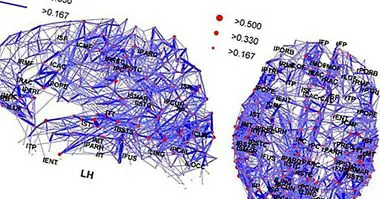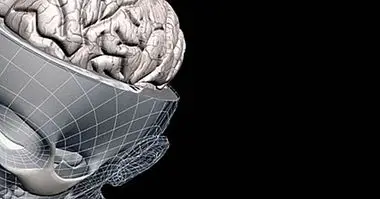Schizotyping: what is it and what does it have to do with psychosis?
Schizophrenia, schizotymy, schizoid, schizotypal, schizoaffective, schizophreniform ... surely the vast majority of psychologists and students of psychology are familiar with these terms. But… What is schizotypia? Is it a new disorder? Is it a personality disorder? What is different from the rest?
In this article we are going to get into the interesting concept of schizotyping through a brief historical analysis of the term, and we will see how it's more of a personality trait that of a mental disorder of the psychotic sphere.
- Maybe you're interested: "Schizotymy: definition, causes, symptoms, treatment and controversy"
What is schizotypia?
Leaving aside the categorical view of psychosis (you have psychosis, or you do not have), schizotypia is a psychological construct that aims to describe a feature continuum s and characteristics of the personality, together with experiences close to psychosis (specifically to schizophrenia).
We must clarify that this term is not currently used and it is not collected either in the DSM-5 or in the ICD-10 , since these manuals already contain personality disorders related to it, such as schizotypal personality disorder. Schizotypy is not a personality disorder nor has it ever been, but a set of personality traits that form a continuum of degree.
Brief historical review of schizotypy
The categorical conception of psychosis is traditionally related to Emil Kraepelin (1921), who classified the different mental disorders from the medical model . This world-renowned German psychiatrist developed the first nosological classification of mental disorders, adding new categories such as manic-depressive psychosis and early dementia (now known as schizophrenia thanks to Educen Bleuler, 1924).
Until recently, the diagnostic systems that we have been using psychologists over the years maintained the categorical vision of Kraepelin, until the arrival of the DSM-5 , which, despite the criticism it has received, provides a rather dimensional point of view.
Meehl (1962) distinguished in his studies the schizotypy (organization of the personality that had the potential to decompensate) and schizophrenia (the complete psychotic syndrome). The approach of Rado (1956) and Meehl on schizotypal personality has been described as the clinical history of schizotypal personality disorder that we know today in the DSM-5, far from the schizotypal nomenclature.
However, the term schizotypia we owe in its entirety to Gordon Claridge, who together with Eysenck, advocated the belief that there was no clear dividing line between madness and "sanity", that is, betting on a conception closer to the dimensional than to the categorial. They thought that psychosis was not an extreme reflection of symptoms, but that many characteristics of psychosis could be identified to varying degrees within the general population.
Claridge called this idea schizotypia , and suggested that this could be broken down into several factors, which we will deal with below.
- Perhaps you are interested: "Schizotypal Personality Disorder: Symptoms, Causes and Treatment"
Factors of schizotypia
Gordon Claridge devoted himself to studying the concept of schizotyping through Analysis of strange or unusual experiences in the general population (without psychotic disorders diagnosed) and the symptoms grouped in people with diagnosed schizophrenia (clinical population). In assessing the information carefully, Claridge suggested that the personality trait of schizotypy was much more complex than it seemed at first, and devised the decomposition into four factors that we will see below:
- Unusual experiences: es what we know today as delusions and hallucinations . It is about the willingness to experience unusual and strange cognitive and perceptual experiences, such as magical beliefs, superstitions, and so on.
- Cognitive disorganization : the way of thinking and the thoughts become totally disorganized, with tangential ideas, incoherence in the discourse, and so on.
- Introverted anhedonia : Claridge defined it as introverted behavior, emotionally flat expressions, social isolation, decreased ability to feel pleasure, either in general or in the social and physical plane. It is what today corresponds to the criterion of negative symptoms of schizophrenia.
- Impulsive inconformity: this is the presence of unstable and unpredictable behavior with respect to socially established rules and norms. Not adapting behavior to social norms imposed .
What is your relationship to psychosis and mental illness?
Jackson (1997) proposed the concept of "benign schizotypy", by studying that certain experiences related to schizotypy, such as unusual experiences or cognitive disorganization, were related to having greater creativity and ability to solve problems , which could have an adaptive value.
There are basically three approaches to understanding the relationship between schizotypy as a trait and the diagnosed psychotic illness (the quasi-dimensional, the dimensional and the totally dimensional), although they are not exempt from controversy, since when studying the characteristic features of schizotypia, has observed that it does not constitute a homogeneous and unified concept, so that the conclusions that can be drawn are subject to many possible explanations.
The three approaches are used, in one way or another, to reflect that schizotypia constitutes a cognitive and even biological vulnerability for the development of psychosis in the subject. In this way, psychosis remains latent and would not be expressed unless there were triggering events (stressors or substance use). We will focus mainly on the fully dimensional and dimensional approach, since they make up the latest version of the Claridge model.
Dimensional approach
It is very influenced by the personality theory of Hans Eysenck. It is considered that the diagnosable psychosis is at the extreme limit of the gradual spectrum of schizotypy , and that there is a continuum between people with low and normal schizotypal and high levels.
This approach has been strongly supported because high scores in schizotypy may fit within the diagnostic criteria of schizophrenia, schizoid personality disorder and schizotypal personality disorder.
Totally dimensional approximation
From this approach, schizotypy is considered a dimension of personality, similar to Einsenck's PEN (Neuroticism, Extraversion and Psychoticism) model. The "schizotypy" dimension is normally distributed through the population, that is, each and every one of us could score and have some degree of schizotypy, and that would not mean that it would be pathological.
In addition, there are two continuums with graduation, one that deals with schizotypal personality disorder and another relative to schizophrenic psychosis (in this case, schizophrenia is considered a process of collapse of the individual). Both are independent and gradual. Finally, it is stated that schizophrenic psychosis does not consist of a high or extreme schizotypy, but that other factors that make it pathologically and qualitatively different must converge .



















